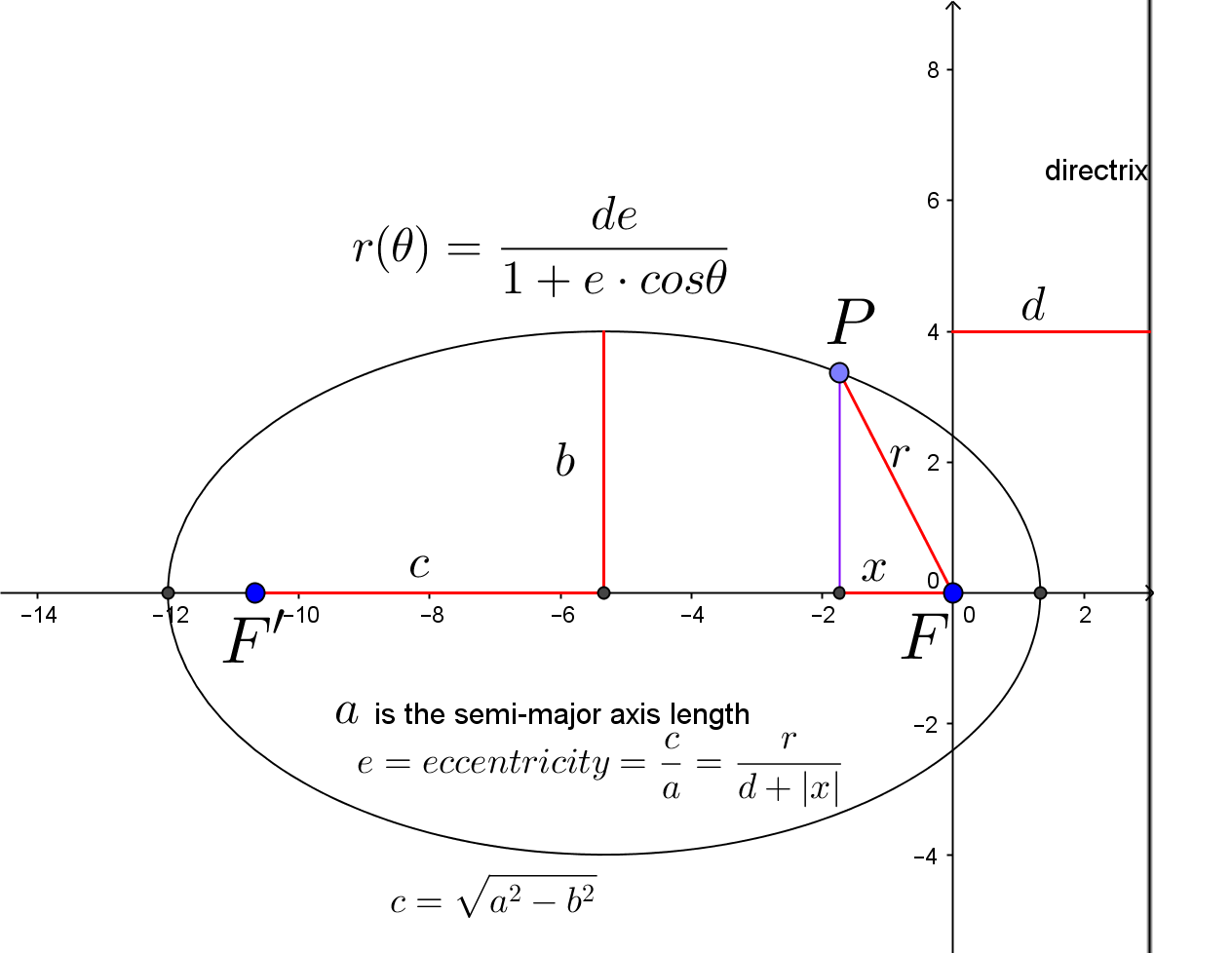Polar Ellipse
Previously we created a "polar" ellipse equation. where the ellipse was centered at the origin. What if instead, we let the origin represent one of the foci? Begin with a definition that applies to all conic sections. A conic section is represented by the locus of points whose distance to a point (the focus) and a line (the directrix) is a constant ratio. This definition would apply to the circle, parabola, hyperbola, and ellipse. For the ellipse, that ratio is named eccentricity and, by definition, it is between $0$ and $1$. At zero we get a circle, and at $1$ we get a parabola. Everything in between is an ellipse. Refer to figure 1 to identify the parts.

We have been given all of the information needed to write the ellipse equation, namely, $P(x,y)$ $(or P(r,\theta))$ and the directrix equation. We may have to calculate length $d$ or length $r$ but we have the information to do that. If given $P(x,y)$,then $x$ is given. If $P(r,\theta)$ then $x=cos\theta$. In both cases, $d$ is the horizontal distance from the Focus to the directrix. We have chosen to locate a Focus at the origin. From the directrix definition of an ellipse, $e=r/(d+x)$, we will substitute $r\cos\theta$ for $x$. To get the right focal point as the origin, we have to recognize that $\cos\theta$ will be negative expanding to the left, so that $x=-r\cos\theta$. If it is done as +$r\cos\theta$, then the origin will be at the right side focal point.
$$e= \frac{r}{d-r\cos\theta}\tag{EQ1} \label{EQ1}$$ $$r=e\cdot d-e\cdot r\cdot cos\theta \tag{EQ2} \label{EQ2}$$ $$r+r\cdot e\cdot cos\theta=e\cdot d \tag{EQ3} \label{EQ3}$$ $$r(1+e\cdot cos\theta)=e\cdot d \tag{EQ4} \label{EQ4}$$ $$r(\theta)=\frac{e\cdot d}{(1+e\cdot cos(\theta))} \tag{EQ5} \label{EQ5}$$
Equation $\eqref{EQ5}$ is the ellipse that is graphed on polar coordinates in figure 1. We defined $F$ as the origin, $(0,0)$. We can easily compute the two endpoints of the major axis major axis by $r(0)$ and $r(\pi)$, from which we know that $2a$ is the distance between them. Knowing $a$, we can find the center point, $CP$. Knowing $CP$ and $F$, we can get the distance $c$ which will allow us to compute $F'$. From the equation $c=\sqrt{a^{2}-b^{2}}$ we can find distance $b$, the semi-minor axis.
If we had picked the left focus as the origin, the equation would have been $r(\theta)=ed/(1-e\cdot cos(\theta))$.